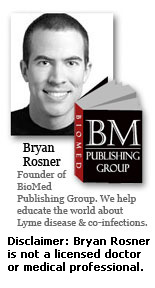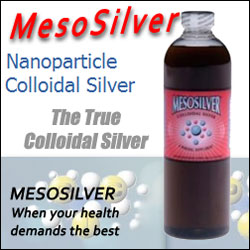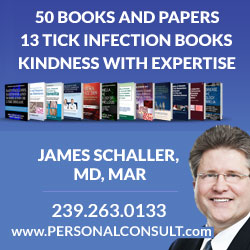Negative Ions for Healing
By Bryan Rosner on Jun 6, 2008 in General News, Treatments
Negative ions are known for their healing effect. In this post, I am going to share an excerpt from an excellent book, and also a video about negative ions. I was recently asked a question on YouTube about this topic so I am responding via this blog post. Here was the question:
Hi Brian. Thanks for the post. I too have felt a tremendous benefit from the negative ions and sunshine while being at the beach. As you seem to have a lot of experience with technology related to health, what are your thoughts on negative ion generators having a similar effect on the body? I’m speaking specifically about machines designed to emit a large amount of negative ions into the air, and aren’t just air purifiers that use negative ions to attract dust and pollutants.
Truth is I don’t know the answer, but in this post I will share what I do know and also, I will ask readers to share their experiences.
Nenah Sylver’s Excellent book, The Holistic Handbook of Sauna Therapy, does a great job to describe negative ions:
The Production of Negative Ions
For many body heating aficionados, a sauna is not a real sauna without water. In fact, one sauna manufacturer told me, in Europe, a sauna is defined according to three criteria: it must be a wood-lined room; the heat source (which can be either electrical or a fire) must reach a minimal temperature of 140°F (60°C); and the unit must be outfitted with hot rocks upon which water can be thrown, in order to get a good löyly. It is illegal to call anything else a sauna.
For both the Finns and Native Americans, throwing water onto hot rocks to create a light vapor is an important ceremony. However, the presence of water vapor in either an electric-heated or fire-heated rock sauna goes beyond aesthetic appeal or even the quality of heat. Very light steam can make the difference between a feeling of well-being or the onset of illness. Western science has finally confirmed what native cultures have intuitively known for centuries: that the moving water is healing because it produces beneficial negative ions.
An ion is an atom or molecule with either a positive or a negative charge. Normally, the number of protons (which have a positive charge) and electrons (which have a negative charge) are equal. However, if an electron gets bumped off an atom, the atom assumes a positive charge. If a lone electron whirling around finds an atom and latches on to it, the atom then becomes negatively charged. An excess of positively charged ions is caused by electrical machinery, smog, and non-natural environments such as automobiles and building interiors that contain synthetic materials. Positively charged ions in the air make people feel fatigued and restless, partly because they attract carbon dioxide that displaces valuable ozygen when we breathe. The immune response can begin to falter, opening the door not only to insomnia, migraines and respiratory illnesses, but also to arthritis, allergies and other autoimmune conditions.
Negative ions are created by plants during photosynthesis, by fire, and by moving water—particularly if it falls through the air in a waterfall, ocean spray or shower, or is vaporized into steam when poured onto the hot rocks of a sauna. Large numbers of negatively charged ions in a room or in the environment energize, rejuvenate, and make people feel secure and calm. Research shows that these subjective good feelings are due in part to the relaxing alpha brain wave patterns that are induced. The healing effect of negative ions is so important that NASA provides a negative ion generator for astronauts after space flights. And many hospitals in Europe routinely place the units in sick people’s rooms, where the negative ions enhance the healing from burns and even help people recover from some forms of cancer.
Aaland describes how the Finns—regarded as the world experts on saunas—responded to the introduction of electric heaters in saunas and the positive ions they produced.
The effect of negative ions on sweat bathing was discovered when researchers were trying to account for the tremendous popularity of sauna wood burning stoves over electric stoves. Subjective reasons, such as the fragrance of burned wood, did not fully explain why Finns felt so refreshed after time in a wood heated sauna and quite dulled from certain electrically heated saunas. Tests showed that the practice of splashing water on super-heated rocks produced an abundance of negative ions. Many electric stoves, it turned out, were not getting the rocks hot enough and the glowing metal heating coils were spurting more positive ions in the air. Researchers learned that if the rocks were properly heated in electric stoves, the positive ions, being larger and less mobile [than negative ions], would ground out on the hot stones. The buying habits of the Finns, perhaps the most sophisticated of sweat bathers, has forced many Finnish electric stove companies to pay particular attention to their sauna stove design . . . it is likely [that] similar negative ion production occurs in any sweat bath that converts water to vapor quickly. The Native American Indian sweat lodge comes to mind.1
Most sauna designers and installers tell me that the best electric stoves allow the rocks to be placed directly among the electric heating coils instead of on top of a grill or in a tray. This requires an exceptionally well-made, insulated, safe stove—but the benefits seem to be worth the extra effort and price.
I created this video while on vacation in Monterey, CA:
If any of you blog readers know of good information on negative ions, especially information on negative ion GENERATORS, please leave a comment here and let’s talk about it. I am curious to know if people have been helped by negative ion generators, as the question on YouTube posed.








